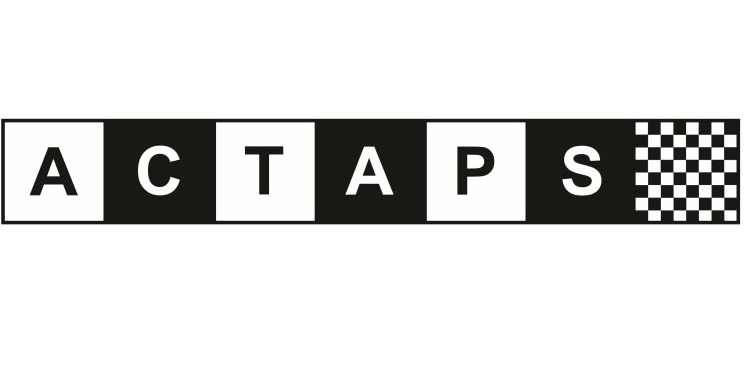Capital Gains Tax – will the uplift remain?
In the world of personal finance and estate planning, one often overlooked but significant relief is the Capital Gains Tax (CGT) uplift on death. This rule, currently part of UK tax law, allows the beneficiaries of an estate to inherit assets without paying CGT on the increase in value during the deceased’s lifetime. However, it is very possible that the new Labour government will announce changes to this relief — and to CGT more broadly — in the upcoming Autumn budget.
What is the Capital Gains Tax Uplift on Death?
Under current rules, when someone dies, the value of their assets is “uplifted” to the market value at the time of death. This means that beneficiaries who inherit those assets can sell them without being liable for the capital gains that occurred during the deceased’s ownership. Essentially, any unrealised gains accumulated before death are wiped out for CGT purposes.
Discover more about Danielle Dennis-Betts
For example, if a person bought a property for £100,000 and it was worth £300,000 at the time of their death, the beneficiary would inherit the property with a market value of £300,000. If they sold it for £300,000 shortly after, there would be no CGT to pay. Without this uplift, the beneficiary would have been liable for CGT on the £200,000 increase in value during the deceased’s lifetime.
This provision is especially valuable for estates with significant assets which are pregnant with gain, such as investment property, as it can dramatically reduce the tax burden on those inheriting wealth. Whilst tax planning may not be at the forefront of the mind of an individual diagnosed with a terminal illness, in the case of a married couple where one has received such a diagnosis, transferring all assets laden with gain to the individual who is most likely to die first could create significant tax savings as part of a wider estate planning strategy.
The Potential for Change: Labour’s Stance on Capital Gains Tax
In recent years, the CGT uplift on death has come under scrutiny. Critics argue that it disproportionately benefits the wealthy, allowing large estates to pass on significant gains without tax, thus contributing to intergenerational wealth inequality. As part of a broader conversation on wealth taxes and fairness in the tax system, a Labour government may look to reform or eliminate the CGT uplift.
Although the Labour Party has not yet released a detailed, formal policy on CGT reform, ministers have hinted at the need for a more progressive tax system, which may include tightening up on capital gains. Some of the likely areas for reform include:
1. Abolishing the CGT Uplift on Death
Labour may choose to scrap the CGT uplift entirely. The institute of fiscal studies has suggested two ways of doing this. The first would be to say that beneficiaries inherit the deceased’s assets at their original purchase price. They would therefore pay CGT on the full gain when the asset was sold. For some assets, there could be significant difficulty in valuing the original cost of the asset accurately. Alternatively, an asset could be treated as if it had been sold at the point of death, such that the deceased’s estate was liable for CGT at the point of death and the individual inheriting the asset would be treated as if they had immediately bought the asset at its market value on the date of inheritance. This would mean that CGT would sometimes be payable by the estate on top of Inheritance Tax, which many already consider unduly onerous.
2. Aligning CGT Rates with Income Tax
Another reform Labour has previously discussed is aligning CGT rates with income tax rates, which would increase the tax burden on those with capital gains. Currently, CGT rates are lower than income tax rates: 10% or 20% for gains on most assets (depending on the taxpayer’s income) and 18% or 24% for gains on property. If Labour were to align these rates with income tax brackets (20%, 40%, or 45%), many individuals selling assets would face a much higher tax bill.
3. Reducing CGT Exemptions
Labour could also look at reducing the various reliefs and exemptions that currently mitigate CGT liabilities. This could include tightening the rules around Principal Private Residence Relief, which currently exempts the sale of a main home from CGT. It could also involve further reducing the Annual Exempt Amount (the amount of gains individuals can make tax-free each year) or making changes to Business Asset Disposal Relief (Entrepreneurs’ Relief), which reduces CGT for business owners.
The Impact of Reforms on Taxpayers
If Labour moves forward with any of these reforms, the implications for taxpayers could be significant, particularly for those inheriting property, investments, or family businesses. Here are some key ways these changes might affect individuals:
1. Increased Tax Bills for Estates
The most immediate effect could be higher tax bills for those inheriting assets. Without the CGT uplift, beneficiaries could face substantial CGT liabilities. This would make estate planning more complex, as people would need to consider how to manage these potential tax burdens.
2. Potential Shift in Estate Planning Strategies
If the CGT uplift were abolished, families might look for new ways to minimise tax liabilities. This could include transferring assets to beneficiaries during the donor’s lifetime (where CGT may still be payable but at current lower rates) or using trusts and other vehicles to manage the passing of wealth in a more tax-efficient manner.
3. Impact on Housing Market
Changes to CGT on inherited property could also affect the housing market. Currently, many individuals hold onto property as it appreciates, knowing the beneficiaries of their estate will inherit the property at the market value on their death. If that advantage is removed, it might prompt more sales of more homes, potentially increasing the supply of housing on the market.
Broader Implications for Capital Gains Tax
Any reforms Labour enacts around CGT would likely form part of a wider effort to address wealth inequality and raise additional revenue. Given that CGT is viewed as a tax on wealth, rather than income, changes could help to close the gap between those who accumulate wealth through investments and those who rely solely on earnings.
At the same time, higher CGT rates or the removal of reliefs could deter investment, particularly in small businesses and the housing market, which rely on favourable tax treatment to incentivise growth and development.
What’s Next for Capital Gains Tax?
The Capital Gains Tax uplift on death has long been seen as a generous relief, especially for wealthy estates. It seems increasingly likely that the Labour government could abolish the CGT uplift and it will be interesting to see what the budget brings on 30 October.
How To Contact Us:
To contact a member of our team, you can fill in our online enquiry form, email info@fraserdawbarns.com, or call your nearest office below. If you’d like to speak to a member of our team at one of our offices across Norfolk and Cambridgeshire, visit our offices page.
Wisbech: 01945 461456
March: 01354 602880
King’s Lynn: 01553 666600
Ely: 01353 383483
Downham Market: 01366 383171
This article aims to supply general information, but it is not intended to constitute advice. Every effort is made to ensure that the law referred to is correct at the date of publication and to avoid any statement which may mislead. However, no duty of care is assumed to any person and no liability is accepted for any omission or inaccuracy. Always seek advice specific to your own circumstances. Fraser Dawbarns LLP is always happy to provide such advice.
Related Articles
Recommended By The Legal 500 Directory*
*We are recommended for the following practice areas: Corporate and Commercial, Debt Recovery, Employment, Personal Injury: Claimant, Agriculture and Estates, Contentious Trusts and Probate, Family, Personal Tax, Trusts and Probate & Commercial Property.
ServicesContact















